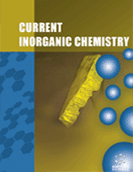Abstract
Cyanoximes represent a new subclass of oximes and have the general formula NCC(= NOH)-R, where R is an electron-withdrawing group such as CN, amide / thioamide, keto-, carboxylic ester, and a variety of aryls and heterocycles. A group of 40 cyanoximes (including 4 biscyanoximes) and their metal complexes has been synthesized and characterized using a variety of spectroscopic methods and X-ray crystallography. Cyanoximes demonstrate a rich stereochemistry and exist as 4 main principal geometrical isomers such as cis / trans (with respect to the oxime C=N bond orientation relative to the size/heteroatom ranking) and syn / anti (with respect to the oxime N-OH fragment orientation relative to the CNgroup). The latter isomers are also erroneously called E or Z by analogy with isomers of C=C compounds. Contrary to organic compounds, cyanoximes frequently undergo a thermally-induced interconversion of syn and anti isomers around the C=N bond at relatively low temperatures, and, in this case the latter terminology was offered to distinguish them from classic, organic C=C compounds. All four isomers represent diastereomers. In this work, we summarize literature data for simultaneously co-crystallized syn and anti diastereomers of several cyanoximes and present new structural data for some metal complexes with monovalent Ag. Cyanoximes also have shown a remarkable ability to form HL2 - anions in their metal derivatives, including alkali metal salts of Werner-type complexes. In the anion, one H-atom is confined between two cyanoxime molecules via strong intermolecular H-bonding. Thus, compounds of a Kat[HL2] type represent acid salts (Kat = Na, K, Cs, where L = mono-cyanoxime; or NiL2 2+; where L = bis-cyanoxime). In this work we present our data for five new acid salts and review available literature data on that subject.
Keywords: Acid-salts, cyanoximes, diastereomers, NMR spectra, pKa values, X-ray analysis.
Graphical Abstract
 28
28

